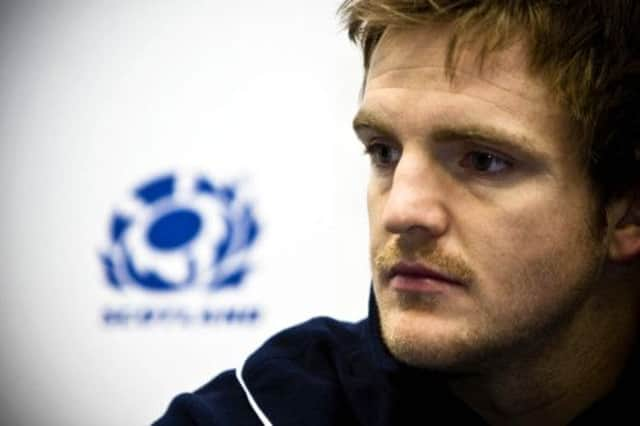Allan Massie: Scotland scrum-half factory delivers


His tally of caps is actually twice the number won by his father, Alan, between 1972 and 1980.Of course, as I daresay dad will have pointed out to him, the two records are not exactly comparable. Alan played in the days when replacements were permitted only if a player was injured. A good many of Rory’s caps were as a replacement, and in matches which he started he seldom played the full 80 minutes, it now being apparently the view of most coaches that scrum-halves can’t last a whole game. So it’s quite possible that father and son spent about the same length of time on the international field.
There’s something else they had in common. Both won their caps in face of fierce competition, Alan from Dougie Morgan, Rory from Mike Blair and Chris Cusiter. Morgan was favoured by the selectors for most of the middle Seventies; Blair and Cusiter were for some years rated ahead of Rory.
Advertisement
Hide AdAdvertisement
Hide AdSuch competition for the No 9 jersey has been common in Scotland. It’s one position where we have more often than not had an embarrassment of riches – even though, over the years, the Lions selectors have sometimes failed to recognise this. There have been positions in the back division where the question has been “who on earth can we pick?”, but at scrum-half it has more often been “which do we leave out?”
Before the Blair-Cusiter- Lawson trio, we had Gary Armstrong (1988-99), Andy Nicol (1992-2001) and Bryan Redpath (1993-2003). Each had a season or two when he was first choice. All were at times out injured. All three also captained Scotland with considerable success. Each had his supporters and it is very hard to decide which one would have picked oneself if all had been fit and in form at the same time. Most would probably have given the nod to Armstrong as the best all-round player, tigerish in his play round the fringes, but Nicol had the best break of the three, and Redpath the best pass. All three also had notable success in the English Premiership, Armstrong with Newcastle, Nicol with Bath, whom he captained when they won the Heineken, and Redpath with Sale Sharks.
Roy Laidlaw kept hold of the No 9 jersey throughout most of the Eighties, even though he had two good challengers, first Gordon Hunter of Selkirk, and then Greig Oliver of Hawick. Hunter won only four caps; at another time, would have had many more. Oliver might have established himself but for the arrival of the young Armstrong.
The best scrum-half of the years before the Lawson-Morgan duumvirate was Gala’s Duncan Paterson, a silky player, with a fine pass, very quick on the break; he had a big part in Scotland’s Calcutta Cup win at Twickenham in 1971, the first there since 1938.
But Paterson has to wait some time to get his chance, competition coming from Gordon Connell, a Lion in 1968, and the remarkable Iain McCrae, who played club rugby for Gordonians in four decades, from 1959-81. McCrae was a splendid nuggety scrum-half who might have won more than six caps if he had played for a more fashionable club.
The middle Sixties were the preserve of the Melrose halves, Davie Chisholm at stand-off, and Eck Hastie. Though they suffered from the usual selectors’ vagaries, they played together ten times for Scotland before being on the beaten side. In 1960-61 Brian Shillinglaw looked likely to make the scrum-half position his own, but he was lured away to Rugby League. So for several years, either side of his brief reign the position was contested by the lanky Stan Coughtrie and Tremayne Rodd, a wonderful Sevens player with London Scottish who never did quite as well at international level as his ability suggested he might. But he too suffered from the inconsistency of selectors. He won 15 caps, 1958-65, but only once played a whole championship through.
At least ten players were picked at scrum-half in the first ten international seasons after the 1939-45 war. This was partly a response to a succession of defeats, partly perhaps a cause of them, few being given the chance to come to terms with international rugby. The best were Dally Allardice of Aberdeen Grammar FP’s, Gus Black of Edinburgh University and Gala’s Arthur Dorward. Incidentally Black, having played Test rugby for the Lions in Australia and New Zealand in 1950 , was never picked for Scotland again, while Dorward’s 15 caps were, like Rodd’s, spread over seven seasons. This was typical of the days when, as Norman Mair memorably put it, patients banged-up in asylums thought they were hard done-by while the SRU selectors walked free outside.
Well, we have changed all that of course, but one thing hasn’t changed. The No 9 Scottish jersey is still fiercely contested. Greig Laidlaw is rightly the man in possession, but Henry Pyrgos is snapping at his heels, while young Sean Kennedy is likely to be doing so too before long.
Advertisement
Hide AdAdvertisement
Hide AdMoreover, if his wretched luck at last changes and he gets an injury-free run, Chris Cusiter will again be making a bid to reclaim the jersey. In short the Scottish scrum-half factory is still delivering the goods.